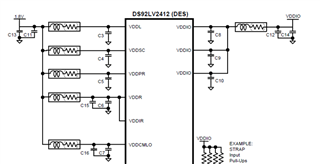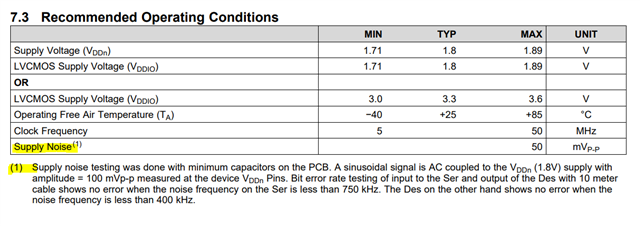Other Parts Discussed in Thread: DS92LV2411
Tool/software:
Hi,
Our customer is currently mass-producing products using the DS92LV2412, and they have observed a lock loss issue particularly under cold temperature conditions in a few units. This lock loss manifests as flickering on the connected LCD. The customer has already performed the following verification steps:
-
Conducted cooling tests using the same PCB revision: lock loss occurred only on defective units, while normal units did not show the issue.
-
Removed the LCD to eliminate potential noise effects: the issue persisted only on defective units.
-
Performed low and high-temperature tests: lock loss was particularly evident under low-temperature conditions.
In addition, they have implemented countermeasures recommended in the datasheet, such as noise isolation on the VDDPR line using beads and capacitors; however, the issue has not been resolved.
We have reviewed related discussions on TI's E2E forum (e.g., Lock Status Lost, Recommended Decoupling Capacitor Value), and understand that most lock instability issues are typically attributed to environmental factors such as power supply quality, signal integrity, and PCB layout, rather than intrinsic device failures.
Based on the above, we would appreciate your confirmation on the following two points:
Question1: Have there been any known failure reports related to DS92LV2412 lot marking "28AX4JUG3"? Two defects occurred in the same lot.
Question2: If environmental factors (power supply, signal integrity, layout) have already been optimized but lock loss still persists, are there any further recommended countermeasures?
Best regards,
Conor



